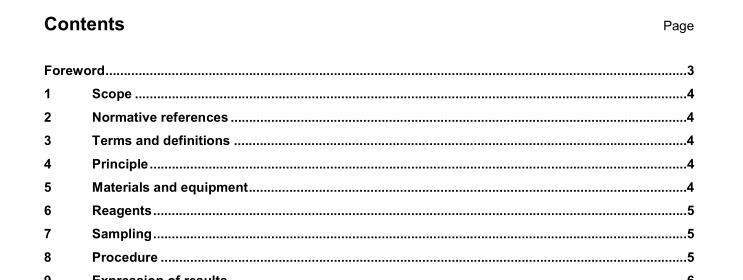EN 15519:2007 – Paper and board intended to come into contact with foodstuffs – Preparation of an organic solvent extract

1 Scope
This European Standard specifies a test method for the assessment of substitute tests performed with volatile test media for the determination of migration from paper and board intended to come into contact with fatty foodstuffs at all temperatures and for any period of time.
NOTE At the time that this European Standard was prepared, the EU directives for material coming into contact with food required use iso-octane or 95 % v/v aqueous ethanol.
2 Normative references
The following referenced documents are indispensable for the application of this document. For dated references, only the edition cited applies. For undated references, the latest edition of the referenced document (including any amendments) applies.
EN 1186-1:2002, Materials and articles in contact with foodstuffs — Plastics — Part 1: Guide to the selection of conditions and test methods for overall migration
EN ISO 186, Paper and board — Sampling to determine average quality (ISO 186:2002)
3 Terms and definitions
For the purposes of this document, the following term and definition applies.
solvent extract
filtered solvent solution obtained as a result of the extraction
NOTE In certain instances this extract can contain small amounts of suspended particles.
4 Principle
The sample is cut and extracted with iso-octane or 95 % v/v aqueous ethanol. The conditions used for simulating contact with fatty foodstuffs in general are 2 h at 20 °C for short time simulating contact or 24 h at 20 °C for long time simulating contact. For baking or cooking applications the test conditions to use are 2 h at 60 °C. In special cases other conditions are possible and they shall be stated in the test report. After extraction, the extract, if necessary, has to be filtered. The extract or the filtrate (solvent extract) is used for investigation of the extractives.
NOTE Test times longer than 24 h are not necessary. Test temperatures more than 60 °C are not possible due to the boiling point of the solvents.
5 Materials and equipment
Ordinary laboratory apparatus and:
5.1 Analytical balance, capable of determining a change in mass of 0,01 mg.
5.2 500 ml conical glass flasks, wide neck with ground glass stopper with tap (see ISO 1773).
5.3 Filtration equipment, fritted-glass filter porosity 4 (nom. size 90) with filter flask of 500 ml (see ISO 6556).
5.4 Graduated measuring cylinder made of glass, 250 ml.
5.5 One-mark volumetric glass flask, 250 ml (see EN ISO 1042).
5.6 Protective gloves (e.g. cotton).
5.7 Thermostatically controlled oven, incubator or refrigerator capable of maintaining a temperature within the range of 20 °C to 60 °C and within the tolerances as specified in EN 1186-1:2002, Table B.2.
WARNING — The interior/sample space of the oven, incubator or refrigerator should not have any exposed heating elements, to minimise safety hazards arising from any loss of the flammable solvents from the tubes during the test period.
EN 15519:2007 – Paper and board intended to come into contact with foodstuffs – Preparation of an organic solvent extract